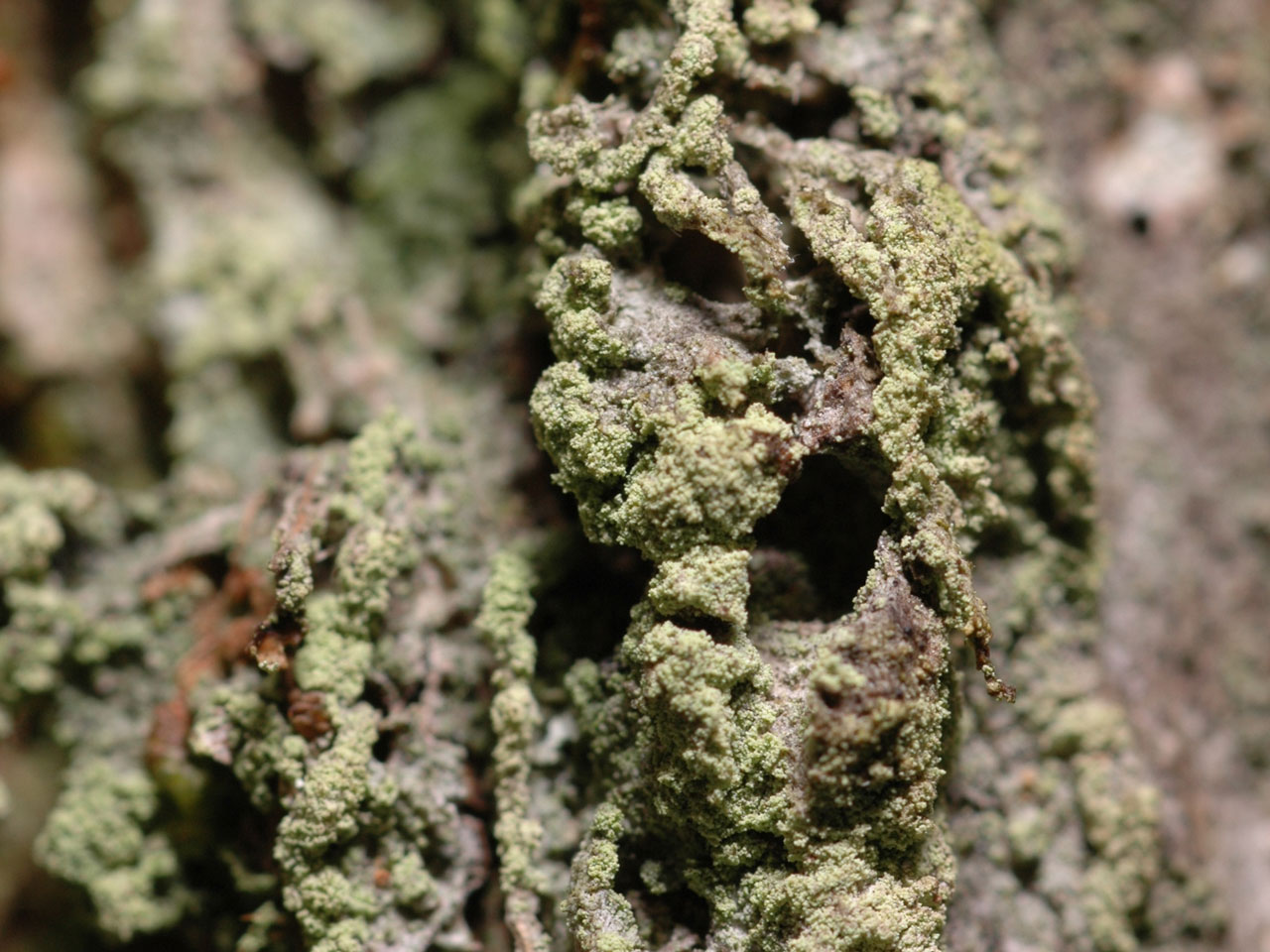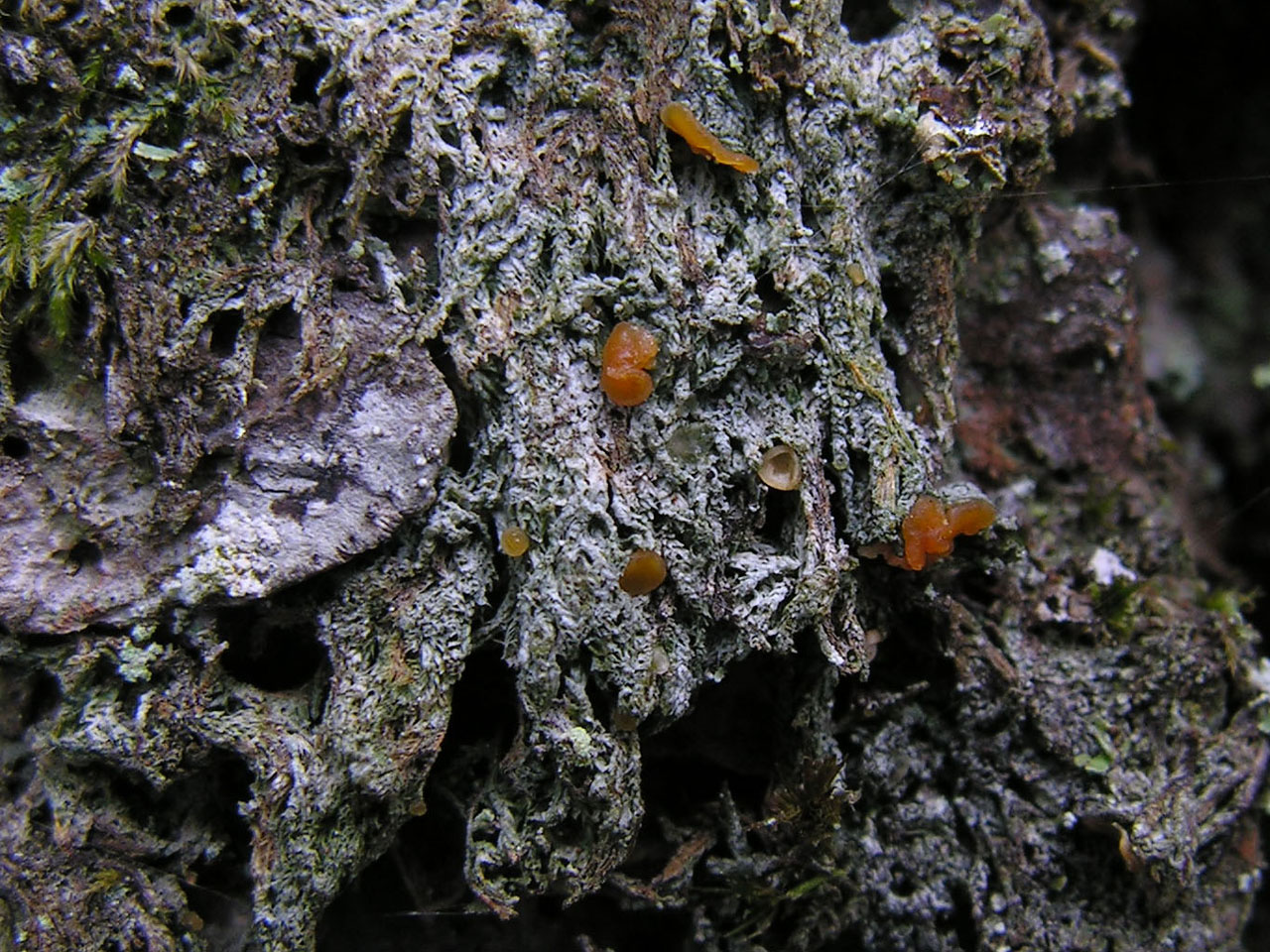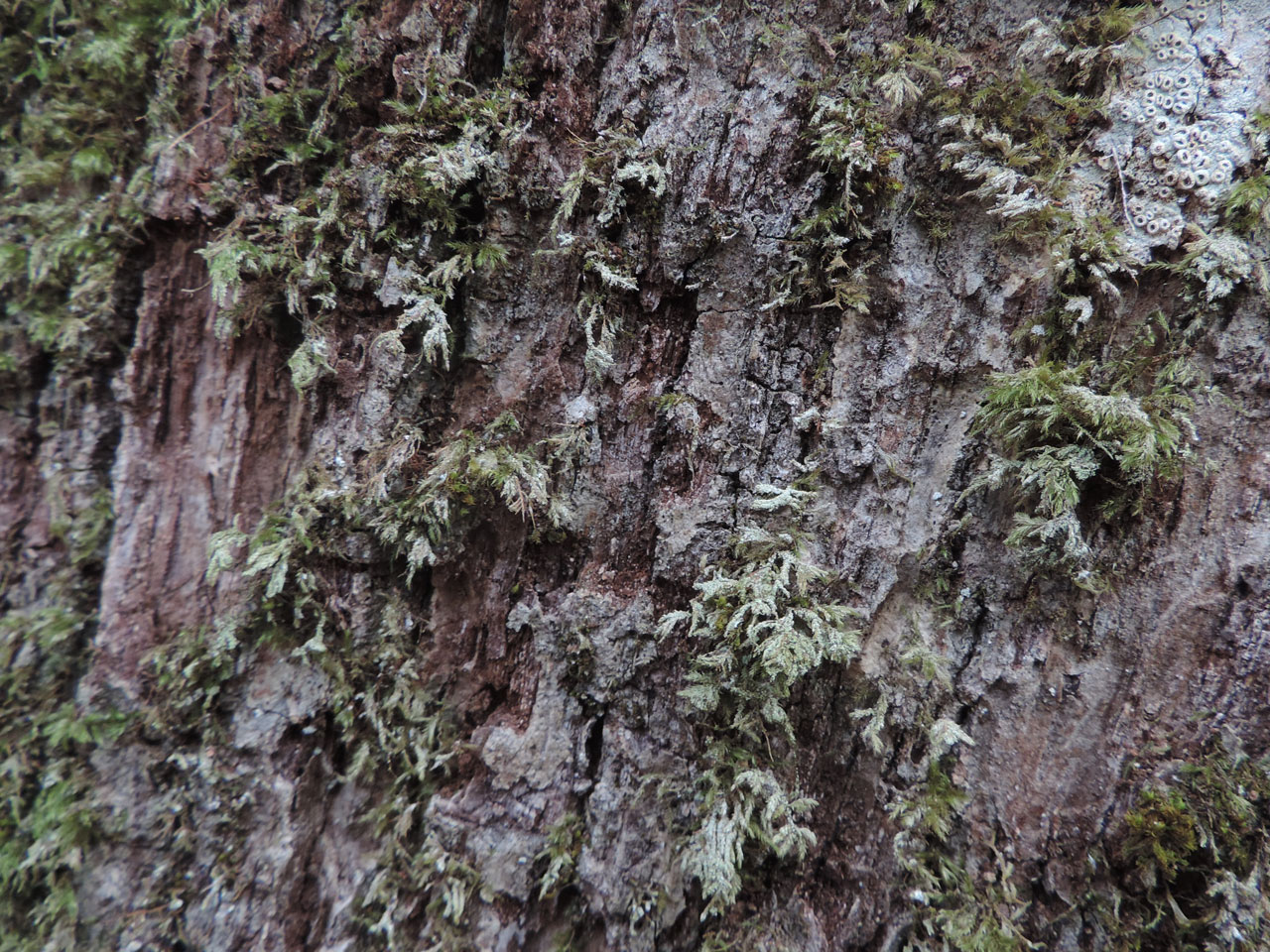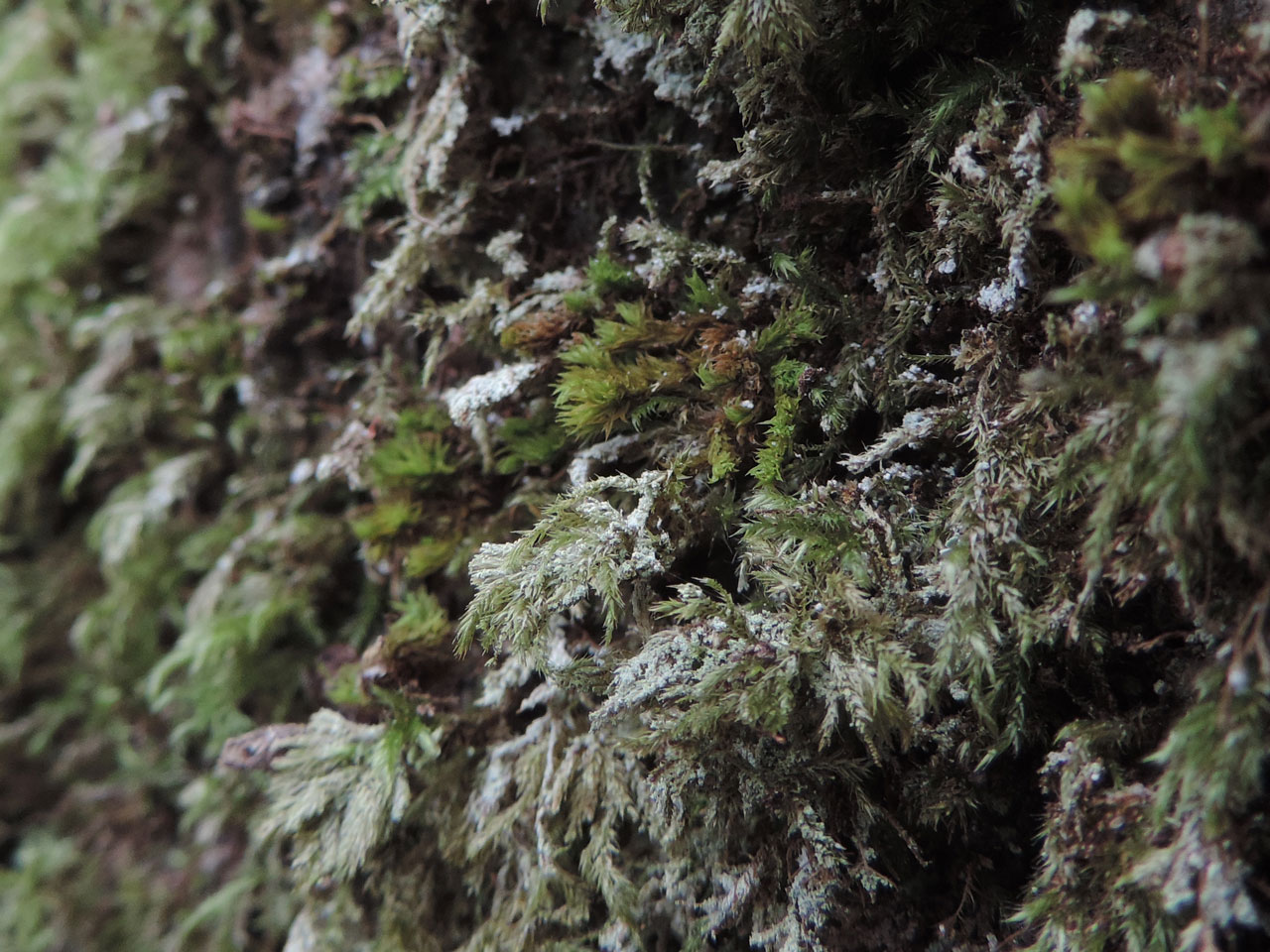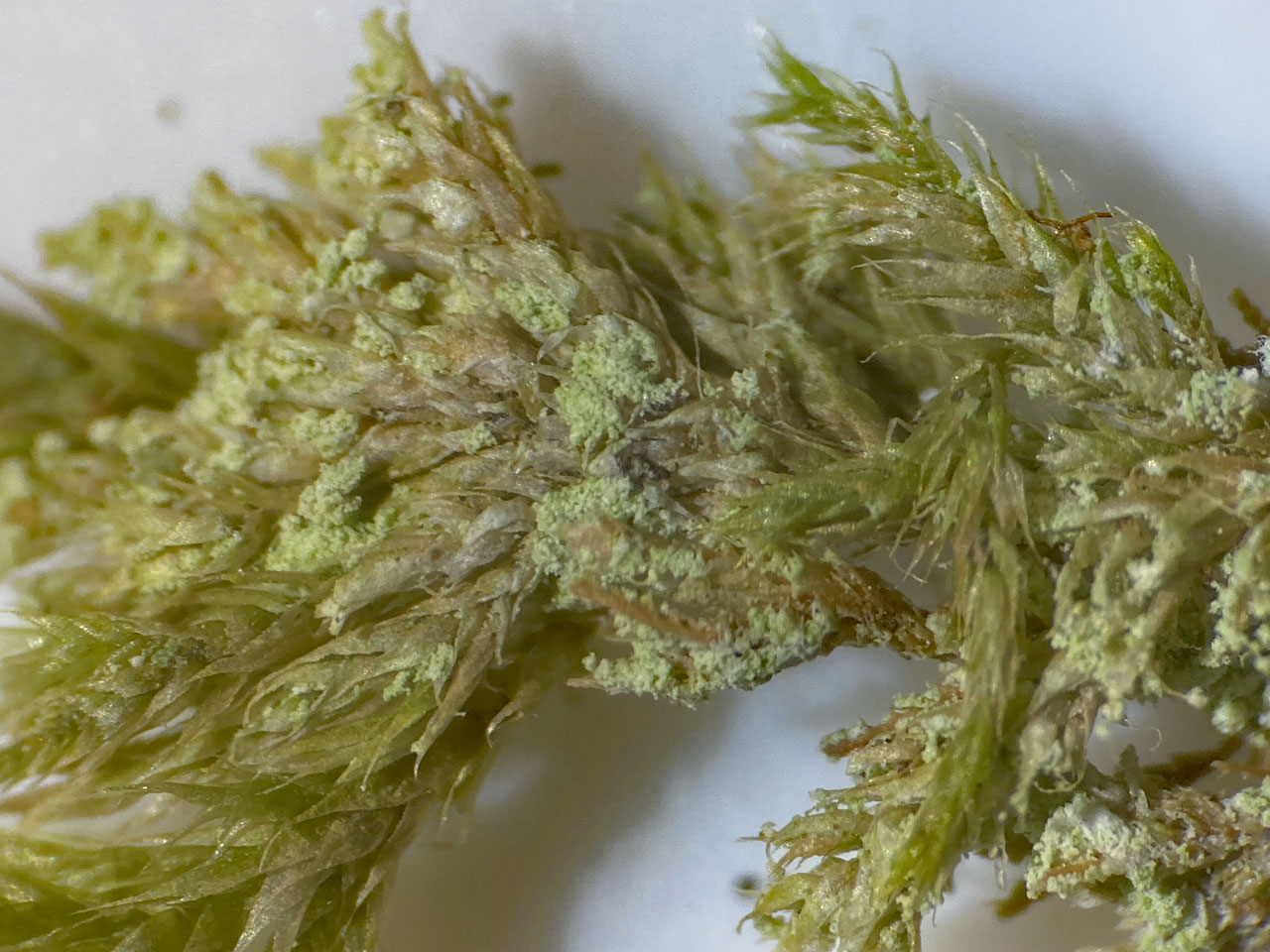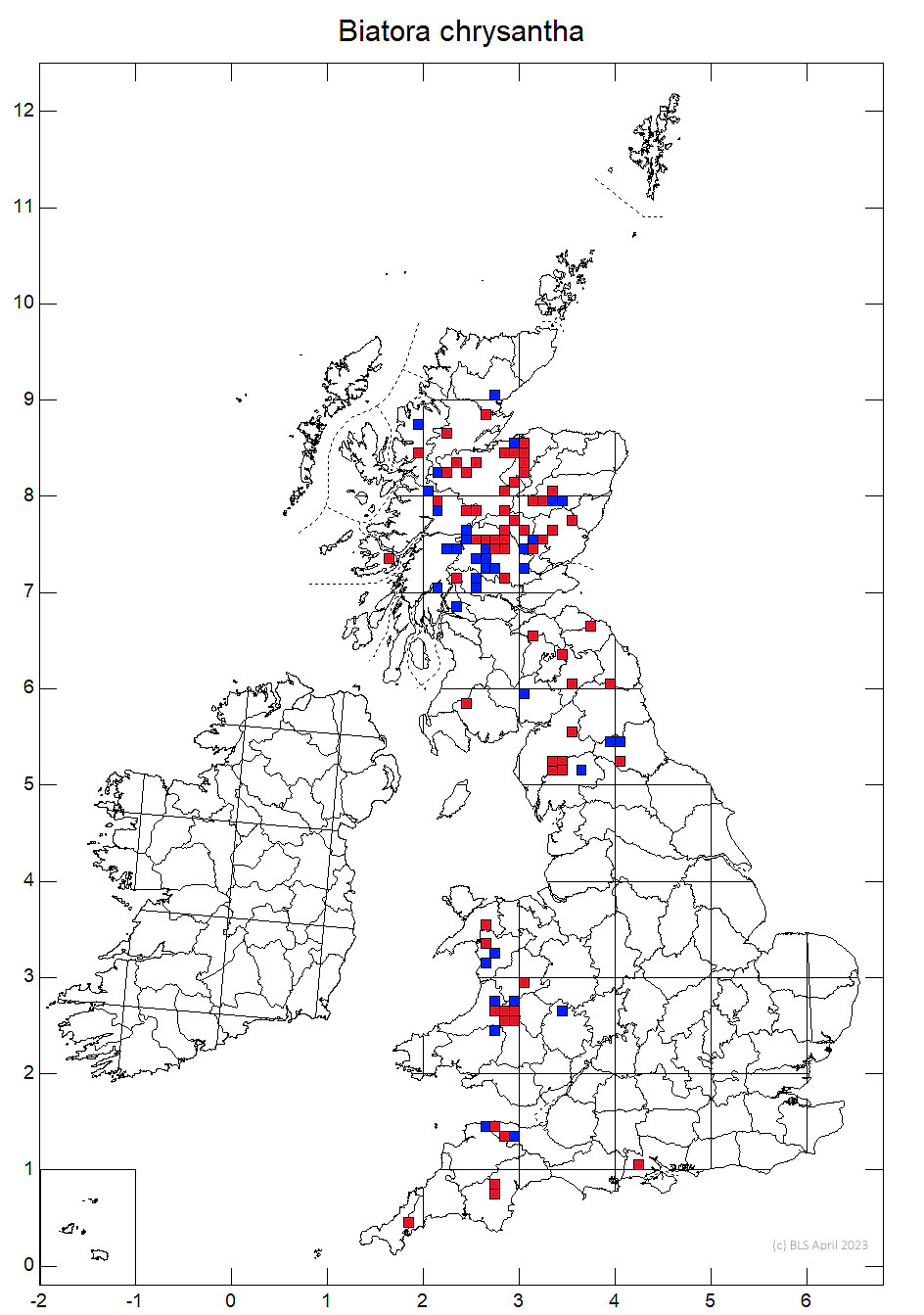Biatora chrysantha
This lichen has a grey-green to dark green thallus with pale, yellowish green soralia, paler than thallus, which can become confluent. Thallus fleetingly C+ red. The pale pink to reddish brown apothecia are uncommon. Growing over bryophytes or on bark of deciduous trees and conifers, mostly in old woodlands, in less strongly oceanic parts of the uplands. A Notable species and it is listed as an indicator in the Suboceanic Woodland Index. Resembles Mycobilimbia epixanthoides, which is C–. When the soralia are confluent it can resemble a Lepraria, but no Lepraria spp is pale yellowish green and C+ red.
Thallus granular-verrucose, sorediate, grey- to dark green, matt; areoles 0.1–0.25 mm diam., soralia confluent, pale, yellowish green, paler than the thallus, 0.25–0.7 mm diam. Apothecia 0.4–1.1 mm diam., moderately to strongly convex, sessile with a constricted base, pale pink to reddish brown; margin not prominent, slightly paler than the disc, glossy, soon excluded; true exciple colourless, 50–95 μm broad; hymenium 40–55 μm high, colourless; subhymenium 50–85 μm high; hypothecium 85–300 μm high, colourless. Ascospores (10–) 12–16 (–20) × (3–) 4–6 (–7.5) μm, 0 (-1)-septate, ellipsoidal. Thallus C+ red, K–, KC+ red, Pd– (gyrophoric acid).
The only British Biatora species with a C+ red thallus, due to the presence of gyrophoric acid. Resembles Mycobilimbia epixanthoides, which is C–, with yellower soralia. Loxospora elatina s. lat. has a K+ bright yellow thallus owing to the presence of thamnolic acid. Ochrolechia androgyna s. lat. has a pale grey, usually much thicker thallus. When the soralia are very confluent, it can be overlooked as a Lepraria species, but the yellowish green colour and C + red spot test are distinctive. Running sterile specimens through the LGB2 sterile corticolous key, it is possible to key out corticolous Trapeliopsis flexuosa growing on mossy bark as B. chrysantha, but the Trapeliopsis can be distinguished by the photobiont cells, which divide by binary fission into two or four daughter cells.
Growing over bryophytes or on bark of deciduous trees and conifers, mostly in old woodlands. Found in Lobarion communities on base rich bark, but also occurs more acid transitional communities as well.

In less strongly oceanic parts of the uplands. Frequent in the E. Scottish Highlands, rarer in N. England. Central Wales and S.W. England (Exmoor, Dartmoor, E. Cornwall), very rare in the lowlands (New Forest).
A Notable species and it is listed as an indicator in the Suboceanic Woodland Index. Near Threatened in the Welsh Red List and likely to be similarly assessed in England.
Britain: Notable
Wales: Near Threatened
Cannon, P., Ekman, S., Kistenich, S., LaGreca, S., Printzen, C., Timdal, E., Aptroot, A., Coppins, B., Fletcher, A., Sanderson, N. & Simkin, J. (2021). Lecanorales: Ramalinaceae, including the genera Bacidia, Bacidina, Bellicidia, Biatora, Bibbya, Bilimbia, Cliostomum, Kiliasia, Lecania, Megalaria, Mycobilimbia, Phyllopsora, Ramalina, Scutula, Thalloidima, Toninia, Toniniopsis and Tylothallia. Revisions of British and Irish Lichens 11: 1-82. Link
